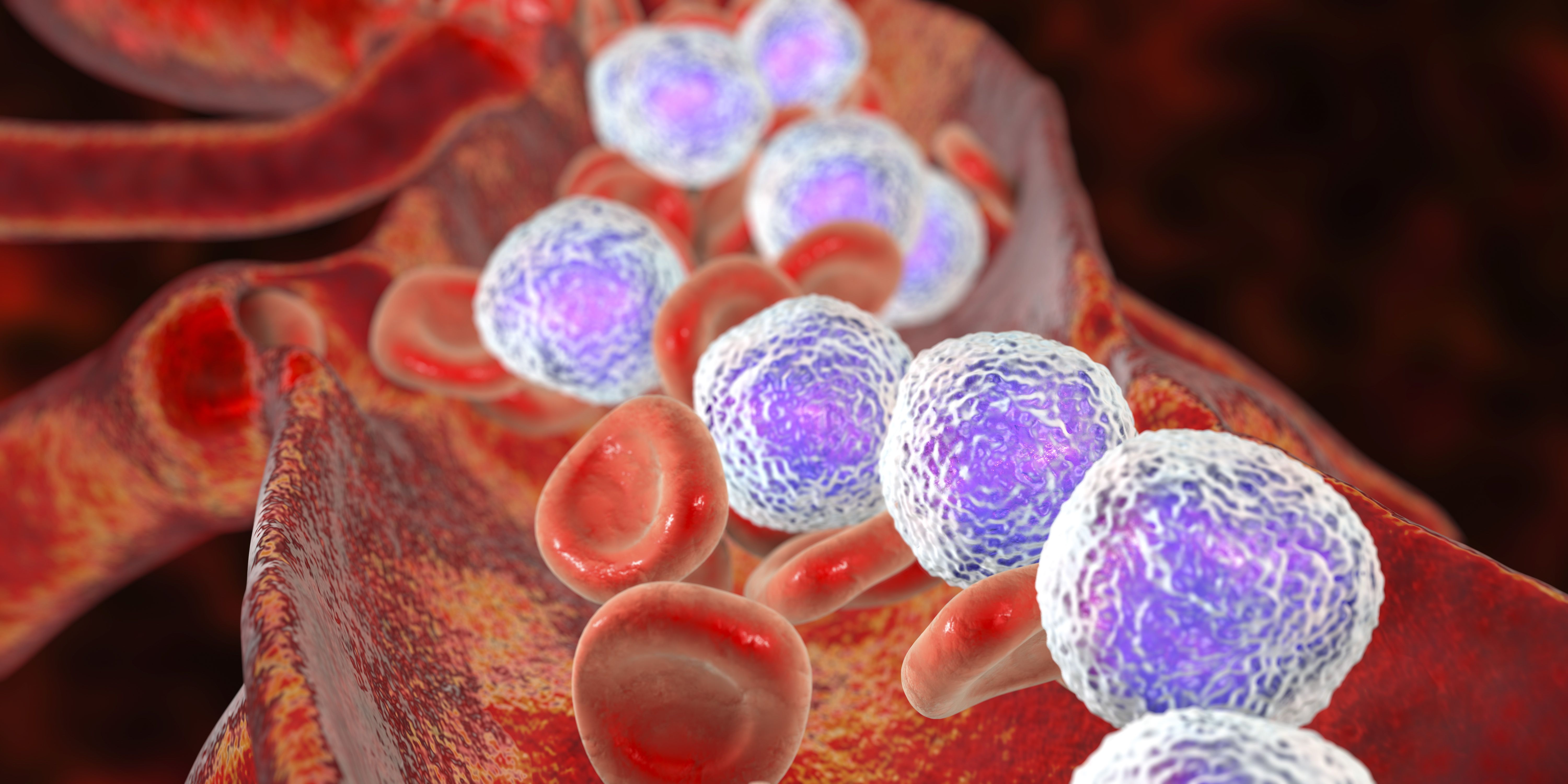ATRA/Chemo Yields Worse Outcomes in Elderly Unfit NPM1+ AML Population
Adding all-trans retinoic acid to non-intensive chemotherapy appears to produce higher toxicity in elderly unfit patients with acute myeloid leukemia harboring NPM1 mutations.
"ATRA in combination with non-intensive chemotherapy as used in our study led to increased toxicity and inferior OS in patients not fit for intensive chemotherapy with newly diagnosed NPM1-mutated AML," according to the study authors.

Combining all-trans retinoic acid (ATRA) with low-dose cytarabine and etoposide led to inferior outcomes in elderly unfit patients with NPM1-mutated acute myeloid leukemia (AML) compared with chemotherapy alone, according to findings from a randomized phase 3 study published in Scientific Reports.
The median overall survival (OS) was 9.2 months in patients who received chemotherapy alone vs 5.0 months in those receiving ATRA plus chemotherapy (P = .023). In each respective arm, OS was 38% vs 23% at 1 year and 10% vs 7% at 2 years. Investigators reported that a hematopoietic cell transplantation-comorbidity index (HCT-CI) score of more than 2, a higher white blood cell count, and older age correlated with unfavorable OS based on multivariate analysis.
There were 50 patients who achieved a complete response (CR) or a CR with incomplete count recovery (CRi), of whom 45 experienced a relapse and 2 in the ATRA arm died in CR/CRi. CR or CRi occurred in 36.1% of patients receiving chemotherapy alone vs 33.3% of those receiving ATRA plus chemotherapy (P = .86). Investigators reported no significant differences in cumulative incidence of relapse (CIR; P = .65) or cumulative incidence in death (CID; P = .14) whether patients received chemotherapy with or without ATRA. Moreover, the addition of ATRA did not have a significant effect on event-free survival (EFS) or CIR according to Cox model analysis.
“Although the preclinical rationale for examining the addition of ATRA in AML was attractive, we were not able to show consistently a beneficial effect across different patient populations,” the study authors wrote. “ATRA in combination with non-intensive chemotherapy as used in our study led to increased toxicity and inferior OS in patients not fit for intensive chemotherapy with newly diagnosed NPM1-mutated AML.”
In this phase 3 study, patients with newly diagnosed AML harboring a NPM1 mutation were randomly assigned 1:1 to receive low-dose chemotherapy alone or in combination with ATRA. Chemotherapy consisted of cytarabine at 20 mg per day subcutaneously on days 1 to 7, continuous etoposide at 50 mg/m2 per day intravenously on days 1 to 3 and then at 100 mg per day on cycles 2 to 6. Patients received ATRA at 45 mg/m2 per day orally on days 8 to 28, which investigators eventually reduced to 15 mg/m2 on days 11 to 28 following toxicities.
The study’s primary end point was OS. Investigators also assessed CRs, which they defined as less than 5% bone marrow blasts, an absolute neutrophil count of 100 granules per liter or higher, no blasts in the peripheral blood, and no extramedullary leukemia. The study also included an assessment of EFS and toxicity.
Patients older than 60 years with newly diagnosed AML including de novo AML and secondary AML with a preceding history of myeloproliferative or myelodysplastic disorder were eligible for enrollment on the trial.
The study’s population consisted of 144 patients, including 72 each who were assigned to the ATRA and control arms. The median patient age was 76.8 years (range, 63.8-91.8). Across the overall population, most had a World Health Organization performance status of 0 or 1 (61.8%), de novo AML (87.5%), and normal karyotype (78.2%). Investigators reported that baseline characteristics were comparable between treatment arms.
Early or hypoplastic death occurred in 18.1% of patients receiving ATRA compared with 8.5% of those receiving chemotherapy alone (P = .09). Additionally, infections during cycle 2 of treatment affected 59% and 32% of patients in each respective arm (P = .01). Cardiac adverse effects occurred more frequently in the ATRA arm compared with the control arm during the first treatment cycle (P = .06).
Reference
Schlenk RF, Weber D, Krzykalla J, et al. Randomized phase-III study of low-dose cytarabine and etoposide + /- all-trans retinoic acid in older unfit patients with NPM1-mutated acute myeloid leukemia. Sci Rep. 2023;13:14809. doi:10.1038/s41598-023-41964-y
Newsletter
Stay up to date on recent advances in the multidisciplinary approach to cancer.